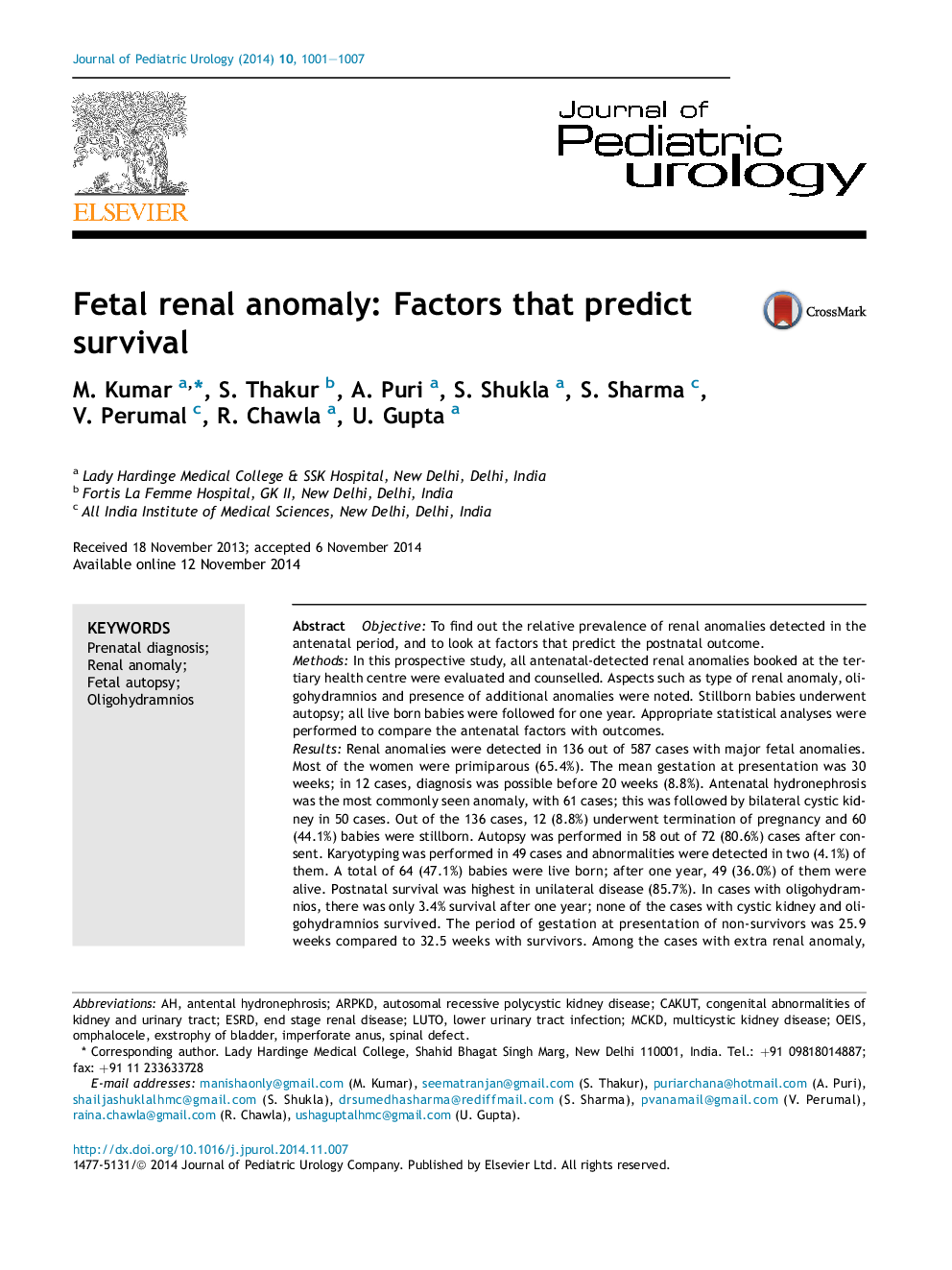| کد مقاله | کد نشریه | سال انتشار | مقاله انگلیسی | نسخه تمام متن |
|---|---|---|---|---|
| 6218313 | 1607136 | 2014 | 7 صفحه PDF | دانلود رایگان |

ObjectiveTo find out the relative prevalence of renal anomalies detected in the antenatal period, and to look at factors that predict the postnatal outcome.MethodsIn this prospective study, all antenatal-detected renal anomalies booked at the tertiary health centre were evaluated and counselled. Aspects such as type of renal anomaly, oligohydramnios and presence of additional anomalies were noted. Stillborn babies underwent autopsy; all live born babies were followed for one year. Appropriate statistical analyses were performed to compare the antenatal factors with outcomes.ResultsRenal anomalies were detected in 136 out of 587 cases with major fetal anomalies. Most of the women were primiparous (65.4%). The mean gestation at presentation was 30 weeks; in 12 cases, diagnosis was possible before 20 weeks (8.8%). Antenatal hydronephrosis was the most commonly seen anomaly, with 61 cases; this was followed by bilateral cystic kidney in 50 cases. Out of the 136 cases, 12 (8.8%) underwent termination of pregnancy and 60 (44.1%) babies were stillborn. Autopsy was performed in 58 out of 72 (80.6%) cases after consent. Karyotyping was performed in 49 cases and abnormalities were detected in two (4.1%) of them. A total of 64 (47.1%) babies were live born; after one year, 49 (36.0%) of them were alive. Postnatal survival was highest in unilateral disease (85.7%). In cases with oligohydramnios, there was only 3.4% survival after one year; none of the cases with cystic kidney and oligohydramnios survived. The period of gestation at presentation of non-survivors was 25.9 weeks compared to 32.5 weeks with survivors. Among the cases with extra renal anomaly, 7.0% survived; none of the cases with associated cranio-vertebral defect or polydactyly survived after a year.ConclusionOut of the different renal pathologies that were diagnosed, survival was highest in the unilateral group. The factors associated with poor prognosis included bilateral disease, absence of amniotic fluid and presence of associated malformation.
Journal: Journal of Pediatric Urology - Volume 10, Issue 6, December 2014, Pages 1001-1007